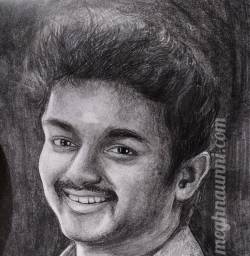Portraits hold a special allure for artists, as they allow us to capture the unique personality and essence of individuals. Shading plays a crucial role in bringing portraits to life, adding depth and realism to facial features. In this guide, we will explore techniques for shading portraits with a pencil, enabling you to create striking and lifelike renditions of the human face.

- Choosing the Right Reference: Selecting a well-lit reference photo or working from a live model is essential for achieving realistic results. Look for images with clear lighting and visible details, as these will guide your shading process.
- Mapping out Facial Proportions: Begin by lightly sketching the basic facial proportions, including the placement of the eyes, nose, mouth, and ears. Pay attention to the overall shape of the face and the angles of the features. This initial sketch will serve as a guide for your shading.
- Observing Light and Shadow: Study the reference carefully to understand how light falls on the face and creates shadows. Identify the areas of highlight, mid-tone, and shadow. Observe the specific contours and planes of the face to accurately depict the three-dimensional form.
- Layering Shadows: Start shading with light pressure, gradually building up layers to darken the shadows. Pay close attention to the subtle transitions between tones and the contours of the face. Use a combination of hatching, cross-hatching, and blending techniques to achieve smooth and realistic shading.
- Shading the Eyes: Eyes are often the focal point of a portrait. Shade the eyelids, using lighter tones for areas that catch more light. Pay attention to the reflections in the eyes, as they add a lifelike sparkle. Gradually build up layers to create depth in the iris and define the pupil.
- Shaping the Nose: Shade the sides of the nose to create a sense of dimension. Pay attention to the shadows and highlights on the bridge, nostrils, and tip of the nose. Use light and shadow to define its form and capture the unique characteristics of the subject.
- Defining the Lips: Shade the lips with attention to their natural curves and the interplay of light and shadow. Consider the subtle transitions between the outer and inner edges of the lips, as well as the highlights that give them a three-dimensional appearance.
- Capturing Facial Hair and Textures: If your subject has facial hair, use precise strokes to depict individual hairs. Observe the direction and thickness of the hair and vary your pencil pressure accordingly. For other textures like skin pores, wrinkles, or freckles, use light, controlled strokes to add subtle details.
- Blending and Smoothing: To achieve a smoother look, blend areas where necessary. Use a blending tool or a soft brush to gently blend the layers of shading, ensuring a seamless transition between tones. Be mindful not to over-blend, as it may result in loss of detail.
- Refining Details: As you progress, focus on adding finer details and refining the features. Use a sharp pencil or lighter touch to enhance small nuances, such as the eyelashes, eyebrows, and facial expressions. Pay attention to unique characteristics that make the portrait recognizable and captivating.
Shading portraits with a pencil allows you to capture the intricate details and subtle nuances of the human face. By understanding light and shadow, carefully observing facial features, and practicing the techniques outlined in this guide, you’ll be able to create realistic and emotionally engaging portraits. Remember, each portrait is a unique opportunity to capture the essence of an individual, so embrace the challenge, experiment, and let your artistic vision shine through!